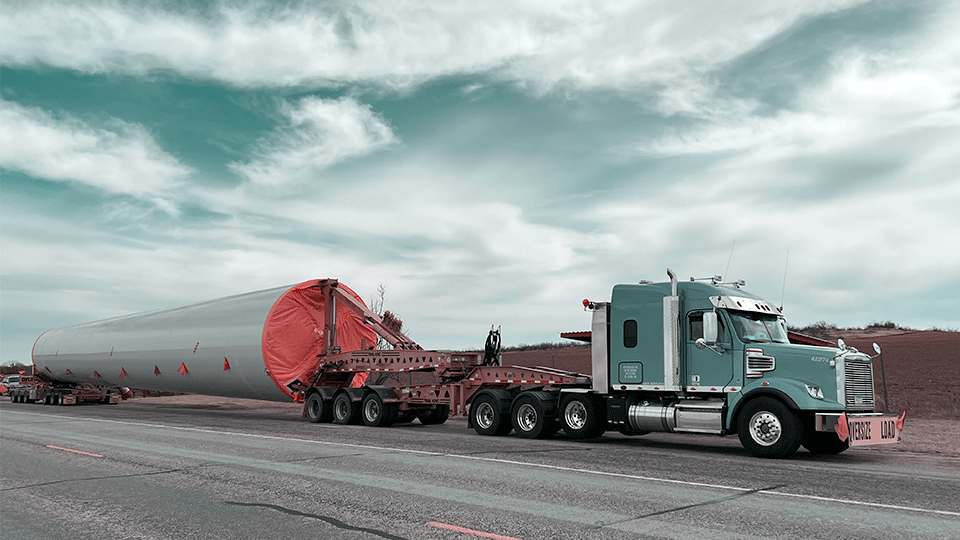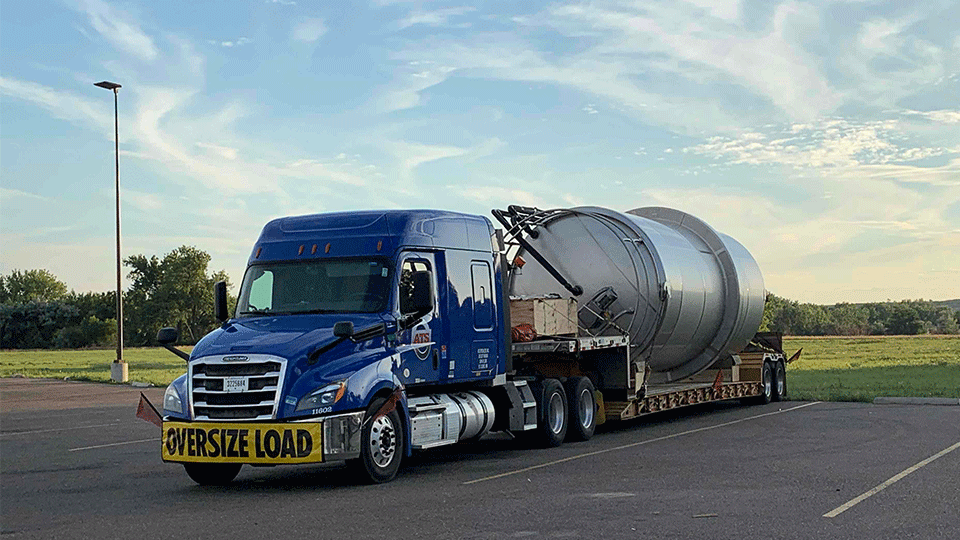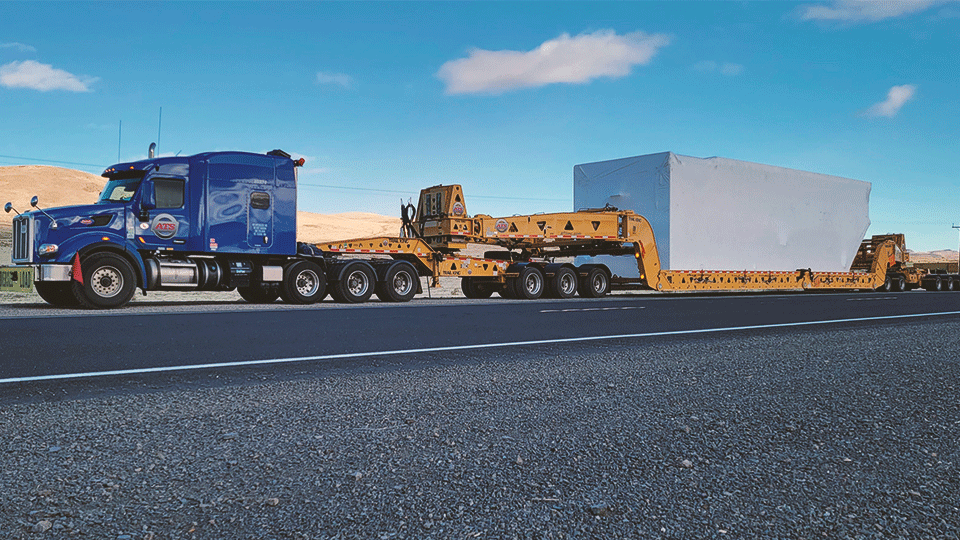
Whenever you ship heavy haul cargo, safety is a significant concern. Keeping your freight secure, your reputation clean and, most importantly, the motoring public safe as cargo transits from A to B, takes expertise, planning and robust protocols.
For these reasons, you can’t trust your heavy haul freight to just any provider. In fact, you need to be more careful when selecting a heavy haul carrier than you are when choosing carriers for other services; there’s just too much at stake.
A single misstep at any point in this process — be it a missing permit or escort, failure to coordinate with area authorities or a delayed route survey — can cause major issues affecting the entire scope of the move.
For this reason, you must exclusively work with competent heavy haul carriers. That said, there are a ton of heavy haul trucking companies in the U.S., each claiming to provide this service better than the field. So it’s understandable if you’re hesitant about how to proceed with this task.
When it comes to it, the best heavy haul transportation providers aren’t difficult to identify; they’re companies with a rich history of providing this service and a track record to back them up.
Here at Anderson Trucking Service (ATS), heavy haul trucking is a service we strive to provide at the highest level. For decades, our heavy haul teams have been serving customers around North America — so we know how challenging this service can be.
It’s also apparent just how important making the right carrier selection decision is for people in your position.
That’s why this article will list eight of the main “red flags” you should watch for when vetting heavy haul carriers in the future.
Common red flags to watch for when vetting a heavy haul carrier:
- Not having a legal USDOT number and active authority
- Holding a safety status of Unsatisfactory or Conditional
- Little/no heavy haul experience
- Lack of asset equipment
- Unable to answer simple safety questions
- Little/no involvement with industry associations
- Lack of experience moving your type/size of freight
- Having no relevant references to provide
The right heavy haul carrier will have all of the tools and capabilities needed to efficiently move your load, many of these red flags signal a company’s inability to do so.
Red Flag 1: Not Having a Legal USDOT Number and Active Authority
This one is kind of obvious. By law, any company operating “commercial motor vehicles” that transport freight or people must be registered with the Federal Motor Carrier Safety Administration (FMCSA) and have a legal USDOT number.
In a nutshell, a USDOT number uniquely identifies a commercial motor carrier, compiling its safety information, track record for compliance, reviews, audit results and inspection details.
Without exception, every carrier offering you heavy haul services needs to have a legal USDOT number. This is a significant red flag if they do not possess an up-to-date DOT registration — steer clear of these providers.
Additionally, every “for hire” commercial motor carrier must have interstate Operating Authority in the form of an MC, FF or MX number (depending on the type of authority).
There are several types of operating authority, each indicating the kind of freight a company has the authority to haul. As such, you’ll want to verify that your carrier has the active authority to move property.
These are fundamental requirements for operating a trucking company, so if a carrier hasn’t taken these early steps, they’re not worth your business.
Red Flag 2: Holding a Safety Status of Unsatisfactory or Conditional
Every legally registered commercial motor carrier is given a safety rating that displays its compliance with the FMCSA’s safety standards. Calculated based on that carrier’s track record over its operational history, the four safety-rating tiers are:
- Unsatisfactory Safety Rating: Unsatisfactory ratings indicate that this carrier doesn’t have the right safety protocols in place to adequately meet the FMCSA’s safety standards and has made any of these violations.
- Conditional Safety Rating: Conditional safety ratings indicate that a carrier doesn’t the right safety protocols in place to adequately meet the FMCSA’s safety standards and could make any of these violations.
- Satisfactory Safety Rating: Satisfactory safety ratings convey that a carrier has excellent safety management controls in place (as outlined by the FMCSA) and hasn’t had many if any, safety violations following an inspection.
- Unrated or None: This carrier has not been given a safety rating. This means that this carrier has not yet been evaluated for safety.
When vetting your next heavy haul carrier, safety ratings must be considered.
You want to work with carriers that have robust safety programs and protocols in place, carriers that have demonstrated this commitment by making investments in safety. As such, only work with heavy haul trucking companies that have safety ratings of “unrated/none” and “satisfactory.”
Do not trust your freight to companies with “unsatisfactory” or “conditional safety ratings,” this is a red flag. Avoid these providers by discovering the safety history associated with their USDOT and MC/MX number on the SAFER website.
Red Flag 3: Little/No Heavy Haul Experience
Some companies define heavy haul trucking differently than others. To some, “heavy haul” freight weighs 56,000 pounds, necessitating nothing more than a three-axle truck and three-axle trailer.
For others, heavy haul means moving massive pieces of out-of-gauge cargo weight upwards of 200,000 pounds or more.
So, what kind of “heavy haul” experience does this company have? Do their heavy haul services meet your needs? Does it seem like they frequently move your size of cargo? How long have they been doing this?
These are important clarifications to make.
If a provider doesn’t have extended experience moving heavy haul freight of all kinds (dimensions, weights, types, etc.), this should be a red flag. In the best case, look for a company that has been moving all kinds of heavy haul freight for more than 10 years.
This is a good sign that they have the resources and expertise (developed over an extended period) to meet your needs.

Red Flag 4: Lack of Asset Equipment and Resources
Heavy haul shipping takes a lot of resources — asset equipment (trucks, trailers, securement gear), training, safety personnel, etc.
The quantity and quality of a heavy haul carrier’s equipment and resources matter. Without a robust network of assets, these carriers will have difficulty reliably meeting your needs. So, during your vetting conversations, make sure to inquire about a carrier’s hauling infrastructure.
How many specialized trailers do they own? What kind of training do they give drivers? Do they have trailer yards in your area?
It’s a red flag if one of the carriers you’re talking to doesn’t have multiple trailers/trucks to turn to when the time comes to move your freight. Work with carriers that have made investments in the heavy haul space, fully committing themselves to serving the needs of these customers.
Red Flag 5: Unable to Answer Simple Safety Questions
As previously stated, safety is priority number one in the transportation realm. Safety’s importance can’t be overstated when shipping heavy haul freight. That’s why it’s certainly a red flag when a carrier has trouble responding to simple safety-related questions — questions that you need to ask.
Whenever you vet a heavy haul carrier, you should ask questions about their safety protocols and systems like:
- “What are your processes for ensuring safe and on-time shipments?”
- “Do you have a driver class system to ensure drivers are qualified to haul specialized freight?”
- “How do CSA ratings factor into your driver hiring processes?”
- “What kind of securement training do you give drivers?”
Answers to these queries should roll off a heavy haul carrier’s tongue. In fact, the best companies have safety sections on their website, explaining their commitment to safely serving customers.

Red Flag 6: Little/No Involvement With Industry Associations
The best trucking companies are constantly improving. You want to work with carriers that consistently learn best practices and collaborate with other industry leaders to fine-tune their processes.
Find carriers that take every opportunity to optimize for their customers. Getting involved with trucking industry associations is an excellent way to do this and the best carriers do.
Here are a couple of associations/groups carriers can get involved in, with relative ease:
- American Trucking Association (ATA)
- Council of Supply Chain Management Professionals (CSCMP)
- Specialized Carriers & Rigging Association (SC&RA)
It’s a red flag if the heavy haul carrier you’re thinking about using isn’t involved with some kind of industry association.
Red Flag 7: Lack of Experience Moving Your Kind of Freight
Although this isn’t necessarily a “deal breaker,” whenever you trust a carrier with your freight, it’s best if they’ve seen this kind of cargo (or something like it) before. You see, even if a carrier has extensive heavy haul experience, your freight is unique. Which makes its requirements unique.
Moving a 75,000-pound generator is completely different than shipping a 75,000-pound excavator. As such, make sure your heavy haul carrier has at least some familiarity with moving your kind of freight.
If they don’t, you’re more likely to experience delays and, in dire scenarios, failure.
Red Flag 8: Having No Relevant References to Provide
Whenever you’re unsure about whether a transportation company can meet your needs, ask them for references — preferably from businesses similar to yours.
This will give you a better understanding of what it’s like to work with this carrier by hearing from one of their current customers.
That said, if a heavy haul company can’t supply you with any references, this is a red flag — look elsewhere.
The Easy Way to Select a Heavy Haul Trucking Company
If any of these eight red flags come up while vetting a carrier, this is a good sign to go in another direction. These are some of the markings of poor heavy haul providers and you only deserve the best.
Here at ATS, we realize it can feel like the deck is stacked against you sometimes — particularly when the time comes to choose a new carrier. That’s why we’ve developed this Heavy Haul Carrier Selection Checklist. Download it today and make sure the heavy haul carrier you choose is “checking all the boxes” — so to speak.
Finally, ATS is proud to rank among the best heavy haul carriers in the U.S., and would love to help you move your next shipment. Interested? Learn more about ATS’ heavy haul resources and capabilities here.




